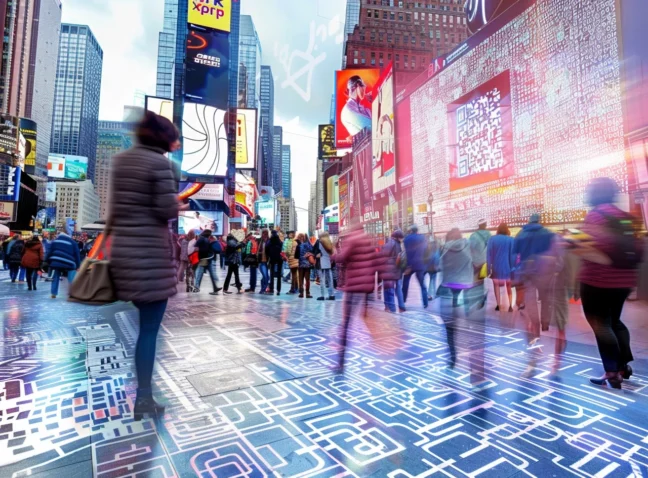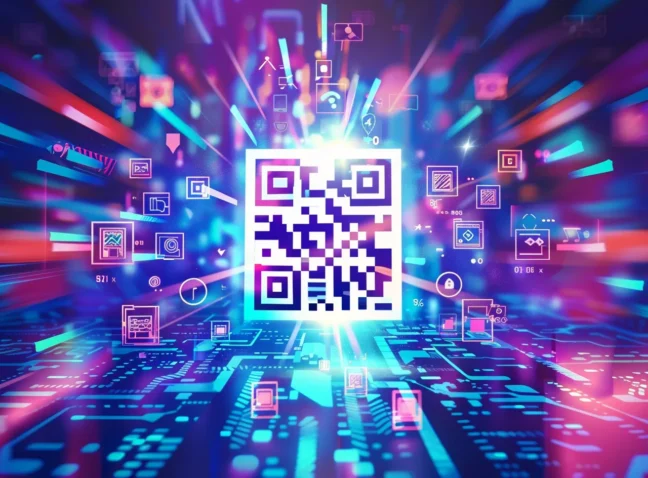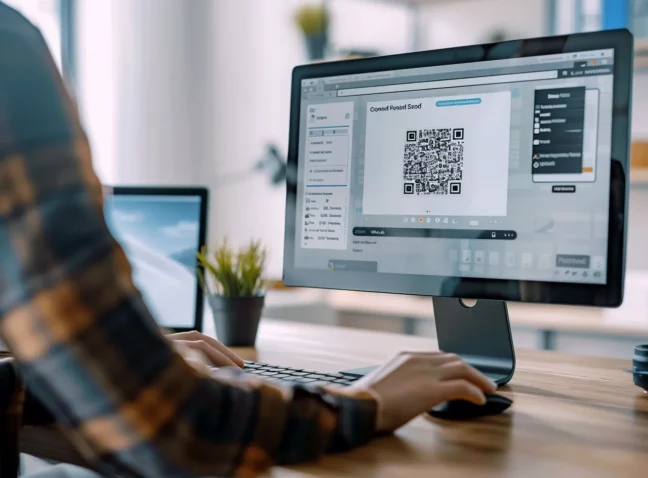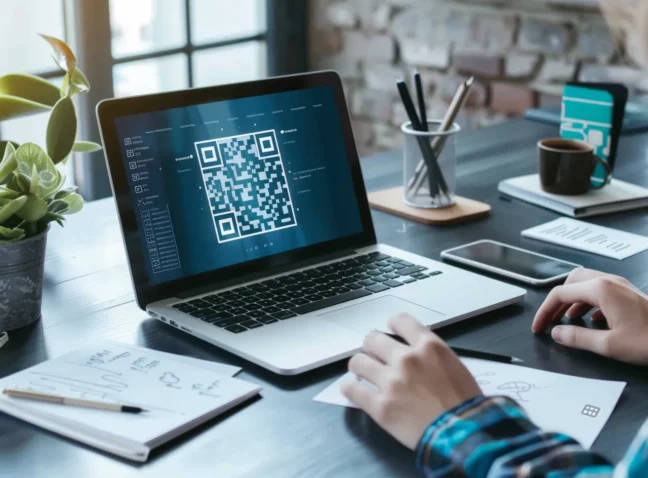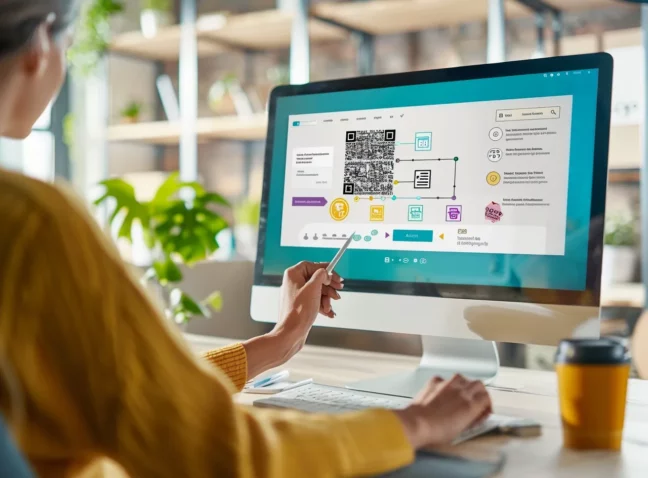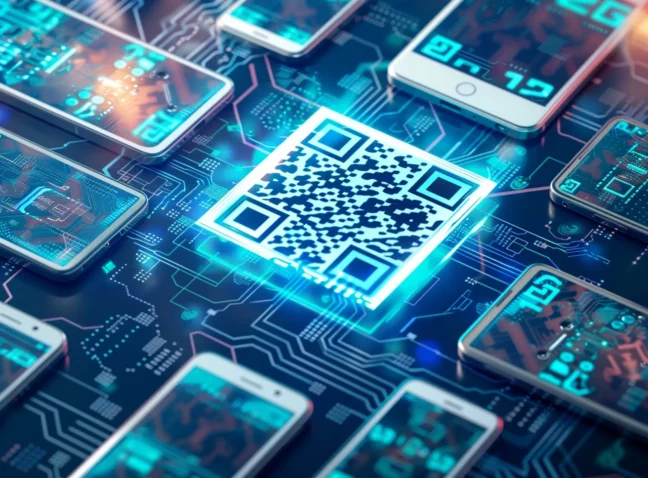The matter of fact is that in the bustling world of culinary arts, standing out is as crucial as the perfect seasoning in a gourmet dish. QR codes, those small, square barcodes, are becoming a secret ingredient for culinary enthusiasts and professionals alike in promoting their cooking projects. These simple yet powerful tools bridge the gap between physical and digital realms, offering an interactive platform to showcase recipes, cooking classes, and gastronomic experiences. They’re not just a tech trend; they’re a new language in the culinary community, enabling chefs and foodies to share their passion with a simple scan. Intrigued? Let’s delve into how these codes are redefining culinary promotion, and why you might want to consider them for your next food venture.
Why QR Codes Are Essential for Cooking Project Promotion
Cooking projects are in a state of constant evolution, adapting to modern trends and technologies. Among these innovations, QR codes stand out as a pivotal tool reshaping how food enthusiasts and creators connect with their audience. QR codes aren’t just tech gimmicks; they’re strategic bridges between the digital and physical realms of culinary marketing.
Simplicity meets versatility in QR codes’ essence for cooking project promotion. These 2D barcodes, easily scanned with a smartphone, offer seamless access to a broad demographic. Their capacity to encode diverse data types, from URLs to multimedia, unleashes a realm of creative marketing possibilities.
In cooking projects, QR codes revolutionize traditional recipe sharing. Embedding them in cookbooks or recipe cards seamlessly links readers to online resources like cooking videos or interactive forums, elevating the user experience beyond print. Additionally, QR codes provide invaluable data insights, aiding in audience understanding and content refinement.
In essence, QR codes represent a fusion of technology and culinary arts, enhancing cooking’s accessibility, interactivity, and reach in the digital landscape. They’re not just trends; they’re essential tools shaping the future of cooking projects.
QR Codes: A Key Ingredient for Elevating Your Culinary Projects
Promoting cooking projects in today’s digital landscape demands innovative approaches. Our goal isn’t just to reach a wide audience but to actively engage them. QR codes serve as crucial connectors in this effort, seamlessly linking platforms and content types.
One primary way QR codes bolster cooking projects is through heightened interaction. Consider a cooking blog utilizing QR codes to direct readers to enriching video content, interactive polls, or exclusive online gatherings. This multifaceted approach ensures sustained engagement across diverse media platforms.
QR codes also play a pivotal role in social media outreach. Whether in printed materials or digital ads, they effortlessly guide users to social media profiles, cooking channels, or specific posts. This seamless integration fosters deeper exploration and interaction across platforms, amplifying the project’s social media presence.
Moreover, QR codes extend their effectiveness beyond the digital realm, finding utility in offline settings like cooking workshops or culinary events. By scanning these codes, participants gain access to online registrations, event schedules, or exclusive digital content, enhancing their overall event experience.
Lastly, QR codes facilitate community building around cooking projects. They can direct users to online forums, groups, or subscription pages, fostering connections among cooking enthusiasts and project creators alike. This sense of community and loyalty is vital for sustaining long-term project success.
The Culinary Innovation with QR Codes for Promoting Cooking Projects
Enhancing culinary ventures with QR codes is a strategic move that aligns well with current consumer behaviors and industry trends. These digital gateways offer immediate access to a wealth of information, from recipes to ingredient sourcing, making them an invaluable tool in the food sector. They’re not just a tech fad; they’re a practical approach to engaging customers in a meaningful way.
Key Statistics:
- 70% of consumers find QR codes helpful for accessing product information while shopping. (Digital Trends 2023)
- QR code usage increased by 25% in the food industry in the past year. (Statista 2023)
- 65% of smartphone users have scanned a QR code within the last month. (Scanova 2023)
- QR codes have contributed to a 30% increase in customer engagement for food-related businesses. (Food Business News 2022)
- 80% of consumers are more likely to patronize restaurants that offer QR code menus. (Culinary Trends 2023)
The Downsides of QR Codes for Cooking Projects
With QR codes for cooking projects, we witness a seamless fusion of digital convenience with culinary creativity. These codes effortlessly bridge the gap between traditional cookbooks and the vast online culinary world. Users find themselves drawn into an interactive realm where recipes, videos, and shopping lists are just a scan away. It’s not just about accessibility; it’s about enhancing the cooking experience.
Moreover, QR codes offer an economical marketing solution, allowing cooking projects of all scales to reach wider audiences without breaking the bank. The beauty lies in their versatility – from sharing recipes to offering exclusive discounts, the possibilities are endless. Through these codes, cooking projects can gather invaluable insights into user behavior, refining their strategies accordingly. In essence, QR codes are not just symbols; they are gateways to a richer culinary journey, accessible to all.
Releasing the Potential: QR Codes for Promoting Cooking Projects
QR codes are steadily gaining traction in the culinary world, offering a new way to connect food enthusiasts with a wealth of cooking resources. These small, square codes are becoming a key ingredient in promoting cooking projects, linking users directly to recipes, step-by-step guides, and even exclusive video content. By integrating QR codes into packaging, cookbooks, or even cooking shows, they provide a bridge between the physical and digital culinary realms. This digital touchpoint enriches the user’s cooking journey, making it more interactive and engaging. Yet, as with any technology, there are hurdles to overcome:
- Security Concerns: A significant majority, over 60% of consumers, are wary of QR code security. They fear potential risks such as malware and phishing attacks, which could compromise their personal information. This apprehension highlights the need for secure, trustworthy QR implementations in the cooking industry. (Forbes 2023)
- User Confusion: Studies indicate that about 40% of users find QR codes perplexing, often leading to a sense of frustration and disengagement. This confusion can stem from unfamiliarity with how QR codes work or unclear instructions on their usage, underscoring the importance of user education and intuitive design. (TechCrunch 2022)
- Interaction Success Rate: Surprisingly, only 20% of QR code scans lead to successful interactions. Factors such as poor placement, low visibility, and a lack of clear instructions contribute to this low engagement rate. It’s crucial for the cooking industry to strategically place and design QR codes for maximum visibility and ease of use. (Business Insider 2023)
- Rise of QR Code Fatigue: Research shows that QR code fatigue is becoming more prevalent, with users increasingly indifferent to scanning codes for promotional purposes. This trend suggests that the novelty of QR codes might be wearing off, and there’s a need for more creative and value-added applications in the cooking sphere. (CNBC 2023)
- Compatibility Issues: Despite their potential, QR codes face limited compatibility challenges. Not all devices and operating systems support seamless scanning experiences, which can hinder the widespread adoption of QR codes in the cooking industry. Ensuring compatibility across a range of devices is crucial for effective implementation. (The Verge 2022)
Brands Using QR Codes to Promote Cooking Projects
Navigating the world of modern marketing, particularly in the culinary sector, demands an understanding of both the potential and pitfalls of emerging technologies. QR codes, with their rapid information access capability, have become a notable tool in this realm. However, their use is not without challenges. Recognizing and addressing these challenges is essential for a marketing strategy that is both effective and balanced. From concerns about user familiarity to dependency on technology, security issues, content limitations, and the risk of design clutter, each factor plays a critical role in the overall impact of QR codes on marketing efforts:
- User Familiarity and Adoption: The effectiveness of QR codes hinges on user familiarity. Not all target audiences are adept at using these codes, which can limit their reach. To counter this, marketers can launch educational initiatives to demystify QR codes, demonstrating their ease of use and benefits. This approach can help widen the audience base and increase engagement levels.
- Dependency on Technology: QR codes necessitate the use of a smartphone and an internet connection, creating a barrier for certain audience segments. By offering alternative methods of accessing the same information, such as URLs or phone numbers, businesses can ensure that no potential customer is left behind due to technological constraints.
- Security Concerns: The potential misuse of QR codes, such as linking to unsecure or fraudulent sites, can create apprehension among users. To mitigate this, companies should prioritize transparency about their security protocols and educate users on how to identify authentic QR codes. This can foster trust and encourage more users to interact with the codes confidently.
- Limited Content Control: A notable drawback of QR codes is the difficulty in altering content once it’s distributed. To overcome this, the use of dynamic QR codes, which allow for content updates even after distribution, can be a game-changer. This flexibility ensures that the information remains current and accurate, enhancing user trust and satisfaction.
- Overreliance on QR Codes: While QR codes are a valuable marketing tool, they should not overshadow other marketing strategies. A well-rounded approach, incorporating a mix of traditional and digital methods, ensures a comprehensive reach and caters to diverse preferences within the target audience.
- Cluttered Design: An overuse of QR codes in marketing materials can lead to visual clutter, detracting from the aesthetic appeal. Strategic placement and integration of QR codes within the design, ensuring they complement rather than dominate the visuals, can create a more engaging and effective marketing piece.
Understanding these nuances and strategically implementing QR codes can significantly enhance the effectiveness of marketing campaigns, especially in the dynamic and ever-evolving culinary industry.
QR code generator for promoting cooking projects
Are you ready to take your culinary marketing to the next level? Let’s dive into the world of QR code magic and see how they can transform your food-related initiatives! With just a few clicks, you can create custom QR codes that’ll make your customers’ mouths water. From sharing recipes and showcasing menu items to offering exclusive discounts and promotions, the possibilities are endless. Plus, with our easy-to-use QR code generator, you can start cooking up some serious engagement in no time. So what are you waiting for? Let’s get started! 🍳📲
